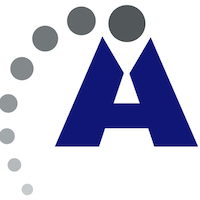Eptinezumab Continues Migraine Reduction Past Second Dosing in PROMISE 2
In these new study results, patients administered 300 mg eptinezumab reported 8.2 fewer MMDs from baseline—when mean patient MMDs were 16.1 per month. The rate was significantly improved from that of patients administered placebo.

A new 6-month trial involving eptinezumab has shown the calcitonin gene-related peptide (CGRP)-targeting therapy has improved benefits for patients with chronic migraine beyond first infusion.
The results of the phase 3 PROMISE 2 clinical trial—presented at the 60th Annual American Headache Society (AHS) Scientific Meeting in San Francisco, CA—showed patients with chronic migraines experience a continued reduction of monthly migraine days (MMDs) from baseline after a second quarterly infusion of 300 mg eptinezumab.
Researchers from the double-blind, placebo-controlled global study administered eptinezumab (300 mg or 100 mg) in 1072 patients by infusion once-weekly over 12 weeks.
Eligible patients had experienced at least 15 headache days per month—with more than half meeting criteria for migraine. Researchers investigated for primary endpoint of mean change from baseline in monthly migraine days over the 12-week period.
Secondary endpoints included proportion of patients experiencing migraine on the day following treatment administration and reduction of migraine prevalence days 1-28; reduction of at least 50%, 75%, and 100% from baseline in mean monthly migraine days; change in baseline in mean monthly acute migraine therapy days; and reductions from baseline in the Headache Impact Test (HIT-6) impact scores, as reported by patients.
Alder Biopharmaceuticals previously announced statistically significant reports from the PROMISE 2 trial in January, and similarly reported beneficial results from the PROMISE 1 trial at AHS last week.
In these new study results, patients administered 300 mg eptinezumab reported 8.2 fewer MMDs from baseline—when mean patient MMDs were 16.1 per month. The rate was significantly improved from that of patients administered placebo (5.6 fewer MMDs; P < 0.0001).
After second quarterly infusion of 300 mg eptinezumab, patients reported 8.8 fewer MMDs, compared to 6.2 fewer in patients administered placebo.
For secondary endpoint, about 21% of patients achieved 100% reduction of MMDs from baseline following 2 quarterly infusions of 300 mg epitnezumab, versus just 9% of those administered placebo. Another 43% of treatment patients reported MMDs reductions of at least 75% from baseline, and 64% reported MMDs reductions of at least 50%. The numbers fared significantly better to those reported by patients administered placebo gauged at the same rates of reduction—24% and 44%, respectively.
Researchers found no new safety reports with the results of the second quarterly infusion, and adverse event (AE) rates among patients administered eptinezumab were similar to those administered placebo. Among the most commonly reported AEs were nasopharyngitis (7.4%), urinary tract infection (2.8%), and nausea (2.5%).
Eptinezumab, the only drug among the anti-CGRP class to be administered in quarterly infusions, is currently only an investigational monoclonal antibody developed by Alder for migraine prevention. Whether it is eventually approved for marketing in a field of great demand—at least 36 million Americans suffer from migraines—may hinge on the results of long-term, global trials such as PROMISE 2.
“These data further add to the significant body of clinical evidence supporting eptinezumab’s encouraging clinical profile and reinforce our belief in the value it may provide to patients, if approved” Robert Azelby, chief executive officer of Alder, said in a statement. “The robust efficacy shown over the two quarterly infusions of eptinezumab in chronic migraine patients continues to support eptinezumab’s potential as an important treatment option for patients living with this debilitating condition.”
For more extensive coverage pertaining to headaches and migraines, check out MD Magazine's sister site, NeurologyLive. The Clinical Focus page serves as a resource for articles, videos, and information on newly released data and research.